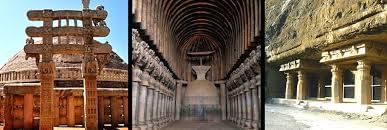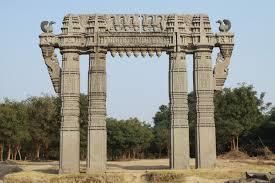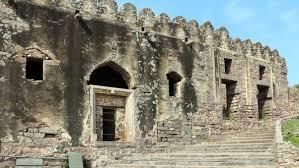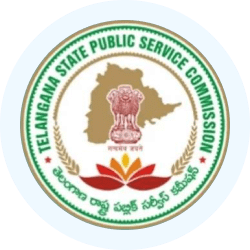Dynasties of Telangana | Telangana State PSC (TSPSC): Preparation Course - TSPSC (Telangana) PDF Download
Introduction
Telangana, situated in the Deccan region, has a rich history marked by the rule of various dynasties. These include the Satavahana dynasty (230 BCE to 220 CE), the Telinga Kakatiya Dynasty (1083–1323), the Musunuri Nayaks (1326–1356), the Delhi Sultanate, the Bahmani Sultanate (1347–1509), and the Vijayanagara Empire (1509–1529). Subsequently, Telangana was incorporated into the Golconda Sultanate (1529–1687).
Satavahana Dynasty

- The Satavahanas came to power following the decline of the Mauryan Empire. Archaeological findings at Koti Lingala suggest it was one of the 30 cities of the Satavahana dynasty.
- Excavations uncovered brick wells, pre-Satavahana coins, and artifacts like Gobhada and Samagopa at the site, believed to be the hermitage of sage Bhavari.
- Coins belonging to early rulers such as Simukha, Kanha, and Satakarni I were unearthed. The Deccan region was a hub of both inland and maritime trade during this era.
- The area between the Godavari and Krishna rivers bustled with ports and trade activities. The economy thrived with a surplus of currency, fostering industrial, commercial, and maritime growth.
- Buddhism flourished, with Satavahana rulers supporting Buddhist structures like Stupas, Viharas, and Chaityas. The dynasty patronized literacy and architecture.
- Hāla, the 17th ruler, was a renowned poet, known for his work "Gathasaptasati" in Prakrit. Gunadhya, Hāla's minister, authored "Brihatkadha." Historical records mention 29 rulers in total.
- The Satavahanas reigned for about 456 years, from the 2nd century BC to the 2nd century AD, controlling much of the southern peninsula along with parts of present-day Maharashtra, Orissa, and Madhya Pradesh.
- The court language of the Satavahanas was Prakrit, reflecting their cultural and administrative practices.
Kakatiyas Dynasties of Telangana

- During the 12th and 13th centuries, the Kakatiya dynasty rose to prominence. Initially, they served as vassals to the Western Chalukyas of Kalyani, governing a small region near Warangal. Prola II (1110–1158), a ruler of this dynasty, expanded his influence southward and declared independence.
- Rudra (1158–1195), his successor, extended the kingdom eastward to the Godavari delta and constructed Warangal Fort as a secondary capital, contending with invasions from the Seuna Yadavas of Devagiri. Mahadeva further expanded the realm to the coastal area, succeeded by Ganapati Deva in 1199. Ganapati Deva was the most significant Kakatiya ruler, consolidating nearly the entire Telugu region into a unified empire after the Satavahanas.
- He ended the Velanati Cholas' rule in 1210 and expanded his domain northward to Anakapalle. Rani Rudrama Devi (1262–1289), another notable ruler, defended the kingdom against the Cholas and Seuna Yadavas, earning their respect as one of the few female rulers in South Indian history. Upon Rudrama's death in 1290, her grandson Prataparudra ascended the throne.
- Throughout his reign, Prataparudra faced internal rebellions and external threats, expanding the kingdom's borders westward to Raichur and southward to Ongole and the Nallamala Hills. He implemented various administrative reforms, some of which influenced the Vijayanagar empire. The Kakatiyas are renowned for their architectural marvels such as Warangal Fort, Ramappa Temple, and Thousand Pillar Temple.
Musunuri Nayaks Dynasties of Telangana

- Historians often attribute the Musunuri Nayaks to the Kamma caste group, although the modern caste identities of the Andhra region emerged later during the Vijayanagara Empire's decline. The Musunuri Nayaks were warrior leaders within the Kakatiya army, and they reclaimed Andhradesa from the Delhi Sultanate in 1326 following the Kakatiya defeat.
- Very little information is available about Prolaya Nayak and the Musunuri family, often described as "obscure." The methods that led to their limited success remain uncertain, as they managed to defeat the Delhi Sultanate's armies in some battles and disrupt their influence in the region. Prolaya Nayak ruled over the Godavari area from 1325 until his death in 1333, leaving no heirs. He was succeeded by his cousin Kapaya Nayak, who governed until 1368 and attempted to expand his rule further.
- Kapaya Nayak seized control of Warangal from Malik Maqbul in 1336, thereby extending his authority over a larger portion of eastern Telangana. He also provided support to other rebels in the region, although some turned against him, such as Alauddin Bahman Shah. This led to several conflicts with Bahman Shah, during which Kapaya Nayak had to surrender various forts and territories. His weakened position was exploited by the Reddis and Velamas, resulting in his death in battle at Bhimavaram and the end of the Musunuri family's rule.
The Bahmani Sultanate Dynasties of Telangana

- Introduction: The Bahmani Sultanate was a significant Muslim state in the Deccan region of South India, emerging as one of the major medieval Indian kingdoms. It was the first independent Muslim kingdom in South India.
- Establishment: The empire was founded by Turkic general Ala-ud-Din Bahman Shah after rebelling against the Delhi Sultanate under Muhammad bin Tughlaq. Nazir Uddin Ismail Shah played a crucial role in this revolt, leading to the establishment of an independent state within the Deccan region.
- Capital and Expansion: The Bahmani capital initially was Hasanabad (Gulbarga) before being shifted to Muhammadabad (Bidar). The sultanate engaged in territorial conflicts with the Vijayanagara Empire in the southern region of the Deccan.
- Peak and Decline: Under the vizierate of Mahmud Gawan (1466–1481), the Bahmani Sultanate reached the zenith of its power. However, it faced a significant defeat at the hands of the Vijayanagara Empire under Emperor Krishnadevaraya, leading to its eventual collapse.
- Division: Post-1518, the sultanate disintegrated into five states known as the Deccan Sultanates, namely Nizamshahi of Ahmednagar, Qutb Shahi of Golconda (Hyderabad), Baridshahi of Bidar, Imadshahi of Berar, and Adilshahi of Bijapur.
Vijayanagara Empire

- Origin and Rise: The Vijayanagara Empire, situated in the Deccan Plateau of South India, was established in 1336 by Harihara I and Bukka Raya I of the Sangama Dynasty. It emerged as a response to Islamic invasions in the region by the late 13th century.
- Duration and Decline: Lasting until 1646, the empire faced a decline following a significant military defeat in 1565 against the combined forces of the Deccan sultanates.
- Legacy: The empire derived its name from its capital city, Vijayanagara, with its remnants surrounding present-day Hampi, now a UNESCO World Heritage Site in Karnataka, India. Accounts from European travelers and local literature offer valuable insights into its history.
The Qutb Shahi Dynasty or Golconda Sultanate

- The Qutb Shahi Dynasty, also known as the Golconda Sultanate, was a prominent territory in South India during the 16th century. This Muslim Turkmens dynasty initially embraced Persianate traditions but later assimilated the local Deccan culture, including Telugu language and the emerging Deccani form of Urdu.
- The ruling family, known as the Qutub Shahis, governed the kingdom of Golkonda, situated in the regions that correspond to present-day Andhra Pradesh and Telangana. The Golconda Sultanate frequently clashed with the Adil Shahis and Nizam Shahis, neighboring powers vying for influence in the region.
- In 1636, under pressure from Shah Jahan, the Qutb Shahis acknowledged Mughal authority, marking the start of Mughal suzerainty over the region. This arrangement persisted until 1687 when Aurangzeb, the Mughal emperor, subjugated and annexed the Golconda Sultanate.
|
80 docs|74 tests
|
FAQs on Dynasties of Telangana - Telangana State PSC (TSPSC): Preparation Course - TSPSC (Telangana)
| 1. What are the major dynasties that ruled Telangana region? |  |
| 2. Which dynasty is also known as the Golconda Sultanate? |  |
| 3. Who were the founders of the Bahmani Sultanate in Telangana? |  |
| 4. What was the significance of the Kakatiya Dynasty in Telangana's history? |  |
| 5. How did the Vijayanagara Empire influence the history of Telangana? |  |
















